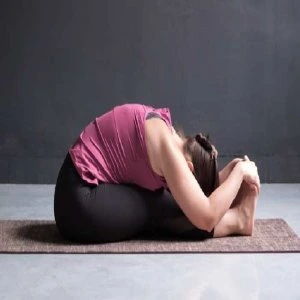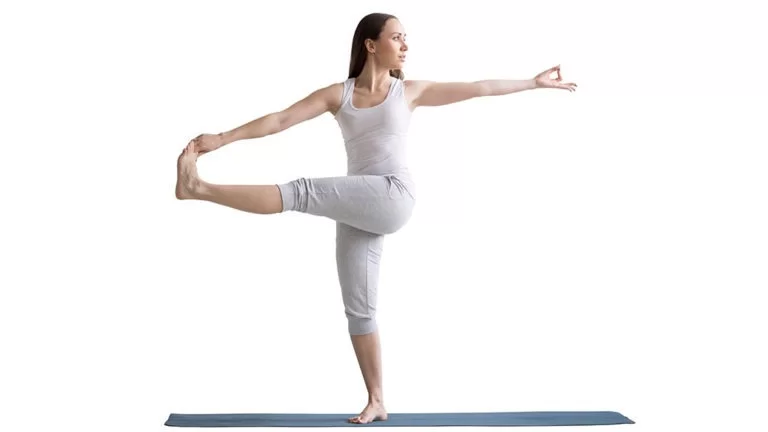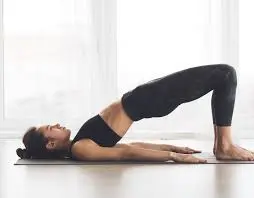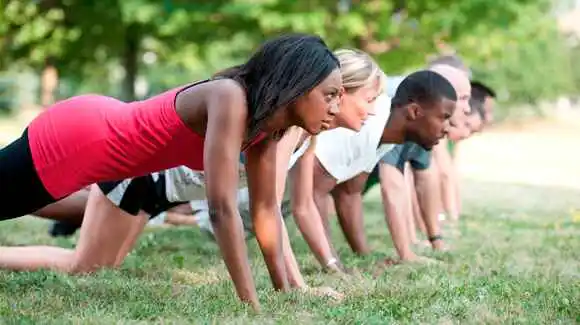Paschimottanasana (Seated forward Bend)
What is a Paschimottanasana?
Paschimottanasana, often known as the seated front bend stance, is a posture that emphasizes forward folding. The three terms “Paschim,” which means “west” or “back of the body,” “Uttana,” which means “extreme stretch,” and “Asana,” which means posture,” are the origin of the Sanskrit name.
This asana consists of sitting with legs stretched out and bending forward at the hips, reaching for the toes. It gives the full-back a deep stretch, with emphasis on the spine, hamstrings, and shoulders. Paschimottanasana is well-known for increasing flexibility, soothing the mind, and activating the abdominal organs, making it an excellent addition to yoga routines for both physical and mental health benefits.
Which muscles are used in Paschimottanasana?
- Hamstrings
- Calves
- Spinal Muscles
- Hip Flexors
- Abdominals
- Gluteus
- Adductors
- Quadriceps
- Psoas
What are the Health benefits of doing Paschimottanasana?
1) Helps in Managing Diabetes
Paschimottanasana, with its forward bending motion, helps to manage type 2 diabetes by actively activating and stimulating the abdominal organs. This involvement can boost insulin secretion and blood circulation, resulting in better blood sugar control.
2) Relieves Menstrual Discomfort
Paschimottanasana can help women who are experiencing period cramps. Stretching and relaxing the abdominal muscles during this pose can help with menstrual cramps, bringing comfort and decreasing discomfort.
3) Stimulates the Liver and Kidneys
Paschimottanasana helps the body detoxify. The position stimulates the liver and kidneys, encouraging them to operate effectively and aiding in the elimination of toxins from the body.
4) Calms the Mind
The smooth folding motion of Paschimottanasana calms the mind. Relaxation reduces stress and increases mental calm, leading to improved well-being.
5) Belly Fat Reduction
Paschimottanasana is a regular practice that stimulates the abdominal muscles, which helps to tone and strengthen them. This can help reduce belly fat over time, improving both physical appearance and core strength. Check out our page on belly fat reduction exercises for more specific workouts.
6) Stretches the Spine and Hamstrings
The asana’s forward bend gives the spine and hamstrings a profound stretch. This stretching movement increases flexibility, reduces stiffness, and improves overall mobility of the back and leg muscles.
7) Improves Digestion
Paschimottanasana features a forward fold that massages and stimulates the digestive organs, which include the stomach and intestines. This stimulation enhances digestion and nutrition absorption, resulting in better digestive health.
How to do a Paschimottanasana?
- Take a straight seat.
- Take a breath. Over your head, extend your arms.
- Breathe out. Start by bending your torso forward from the waist.
- Grab your toes and simultaneously lower your outstretched arms.
- Bend even more to narrow the gap between your chest and thighs.
- Try to rest your forehead against your legs.
- Hold the position for 30 to 60 seconds and breathe evenly.
- Take a breath. Lift your upper body before the top of your head and raise your torso.
Paschimottanasana video:
What are the Beginners’ Tips for Paschimottanasana?
- Begin by applying a strap, bending your knees, and sitting up on supports. You should be able to maintain the length of your spine while tilting your pelvis forward.
- To broaden your sitting bones and increase the amount of space you have to fold forward, contract your thigh muscles, and turn your thighs slightly inward.
- You can bend your knees as much as necessary if your hamstrings are extremely tight.
What are the types of Paschimottanasana?
When attempting to perform Paschimottanasana without putting undue strain on your muscles, you might incorporate the following variations:
- Paschimottanasana with a Prop
- Paschimottanasana with a Strap
- Paschimottanasana with Bent Knees
- Paschimottanasana in a standing position
Paschimottanasana with a Prop
You can use a prop to support your knees and arrange them underneath your legs if you have trouble putting them on the ground without bending them.
A flat cushion or a blanket could be used as this prop.
If your chest or lower abdomen is feeling strained, place this prop on your thighs so that you may breathe more easily while you extend forward.
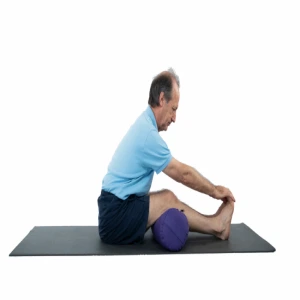
Paschimottanasana with a Strap
You must grasp your toes to fully extend your body in this pose. You can use a strap to grip your toes if you can’t hold them.
By giving you additional support, this strap will improve your performance in the yoga pose in Paschimottanasana.

Paschimottanasana with Bent Knees
You can perform this pose with your legs bent if your hands are too tight to concentrate on your breathing.
You could also sit on a pillow that will lift your hips so you can reach your toes.
Paschimottanasana in a standing position
How to do: Take a proud stance. Your spine should be straight and your feet should contact each other.
Lift your arms and stoop at the hips without bending your knees.
Try putting your hands on your toes, respectively. You might grip your ankle when you first start. You can touch your toes once you’ve practiced.
Try to Keep your head between your legs if possible.
For 30 seconds, try to hold this position.
The wall might provide support.
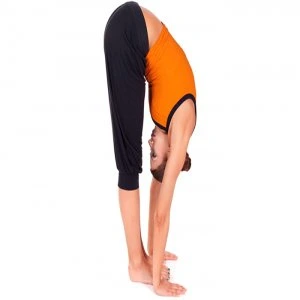
What are some typical errors to avoid when performing Paschimottanasana?
Make sure your knees are parallel and not turned outward when performing the Paschimottanasana. Otherwise, the stress would be closer to the joints and your hamstrings would not be as stretched.
The back must stay stretched during the entire process. You can breathe more deeply as a result.
When executing Paschimottanasana, what are the contraindications and precautions to take?
- Some yoga poses are not suitable for everyone, even though everyone should practice yoga to preserve their health and wellbeing. Before performing Paschimottanasana, keep the following points in mind.
- It is preferable to start with this pose while being guided by a qualified yoga instructor.
- At first, it’s challenging to fully flex yourself. With practice, you will acquire this. Do what is possible without experiencing pain, and never push yourself into the pose.
- During the posture, the abdomen is compressed. Therefore, you cannot do it when you are hungry.
- To avoid putting undue strain on the fetus and the navel region, pregnant women can do this pose with their legs apart. Instead, they should lift their chest.
- You cannot do this posture if you have injuries to your arms, hips, ankles, or shoulders. If you also have diarrhea or asthma, avoid doing this pose.
- It is advised to perform the pose without fully bending forward if you have herniated spinal discs.
- You can practice the asana by flexing your knees rather than keeping your legs straight if you have hamstring issues.
What are the disadvantages of Paschimottanasana?
Slipped Disc: Because Paschimottanasana places a lot of strain on the lower back as the body is pushed forward, people with slipped discs should avoid doing this yoga pose.
Hernia: This pose should not be performed by someone who has a hernia.
FAQs
What is Paschimottanasana and its benefits?
An intense stretch that strengthens the spine and opens the back muscles is called paschimottanasana. Additionally, it relieves stiffness and soreness in the lower back.
What is the other name of Paschimottanasana?
A traditional Hatha yoga practice, paschimottanasana is also referred to as seated forward bend or intense dorsal stretch. The Sanskrit term Paschimottanasana, which translates to “west stretching pose,” alludes to the rear of the body, from head to toe.
Does Paschimottanasana reduce belly fat?
The abdominal muscles are engaged by regular Paschimottanasana practice, which helps to strengthen and tone this region. Over time, this can improve core strength and physical appearance by decreasing belly fat.
Who Cannot perform paschimottanasana?
The pose should not be performed by anyone with sciatica, hamstring issues, back pain, or a slipped disc. Those who have stomach ulcers, asthma, or diarrhea should also avoid this posture because it puts extra strain on the abdomen. Avoiding paschimottanasana stance while pregnant is advised.
References:
Paschimottanasana – The Forward Bend in the Sitting Position | Steps | Benefits | Learn Yogasanas Online | Yoga and Kerala. (n.d.). Yoga. https://www.keralatourism.org/yoga/sitting-postures/paschimottanasana
Ambatkar, N. (2024, May 22). Benefits of Paschimottanasana (Seated Forward Bend Pose) and How to Do It. Truemeds. https://www.truemeds.in/blog/benefits-of-paschimottanasana-and-how-to-do-it
Ryt, A. P. (2021a, May 24). How to Do Seated Forward Bend (Paschimottanasana) in Yoga. Verywell Fit. https://www.verywellfit.com/seated-forward-bend-paschimottanasana-3567101
EkhartYoga. (2020b, November 6). Seated Forward Bend – Ekhart Yoga. Ekhart Yoga. https://www.ekhartyoga.com/resources/yoga-poses/seated-forward-bend

